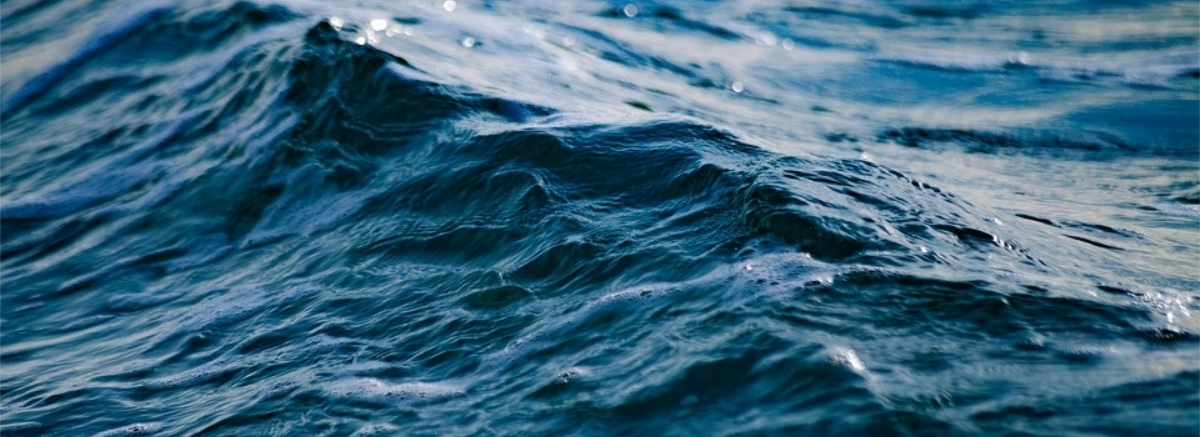Drinkable Seawater: Why Ignore it?
For a long time now, we’ve known that we can’t consume seawater – even though it makes up 70% of our planet. It’s too salty for our bodies.
But is it possible to make seawater drinkable? Yes. It’s possible. Through desalination, several countries are already tapping into the sea to address their water crisis, by turning the salty water to clean drinkable water.
What is Desalination?
Simply put desalination, also called desalting, is the process of removing salt and other minerals from seawater, to obtain fresh drinkable water – which can be consumed by both humans and animals.
History of Desalination
While the most significant advancements in this technology occurred within the past century, desalination has been in use for thousands of years. The process dates back to the 4th century when the ancient Greek sailors discovered that they could drink seawater by boiling it to evaporate fresh water from its salt.
In the 8th century, the Romans started using clay filters to trap salt from seawater. Experiments by Aristotle further proved that distillation and filtration were viable desalination methods. These processes have formed the basis for the modern-day desalination process.
However, large-scale desalination processes were not practiced until the mid-20th century in 1938, when the first sustainable plant opened in Saudi Arabia. Soon after, the US followed suit in 1955, and Spain later on in 1964.
During this period, most desalination techniques came to light, including reversal osmosis, which is still popular today.
Benefits of Desalination
Despite the many controversies surrounding seawater, desalination promises to address one of the most challenging problems in the world; water scarcity. With more than 780 million people lacking access to fresh water, desalination may be the silver bullet; governments have been looking for.
· Provides fresh potable water
The fact that seawater is unlimited means that desalination provides an endless freshwater supply in drought-stricken areas, throughout the year. Moreover, it’s not restricted to seawater alone, it can also filter and distill contaminated and brackish waters, providing clean potable water for the community.
This process has been successful in some Caribbean islands and parts of Saudi Arabia which mainly rely on desalinated water for their survival.
· Boosts agriculture in arid areas
Desalination also provides a solution for farmers with limited access to fresh water for their farms, especially in arid areas. This greatly improves their crop output, and subsequently, their country’s economy.
· Protects fresh water catchment areas
Investing in desalination also reduces the pressure on freshwater sources, helping protect both the catchment areas and their aquatic life.
Challenges of Desalination
Even as more people turn to desalination, it’s still not a full-proof process. Like most methods, desalination faces numerous challenges that are yet to be streamlined. This includes:
· Cost
This is the main reason why desalination isn’t as widespread as it ought to be. The process utilizes a lot of energy to produce small amounts of potable water, making it very expensive. Furthermore, the construction of desalination plants is quite costly for most countries.
The sea salt content is also rising, which means that desalination gets more expensive by the day.
· Environmental impact
Many environmentalists have outrightly come out against desalination with regard to their salt disposal approach. Most desalination plants pump the left-over brine (water that’s over-saturated with salt) back into the ocean. This causes a sudden change in the water’s salinity levels and hence, affects sea animals and plants.
The filtered salts disposed on land can also find their way back to the sea, and pose a threat to aquatic life.
· Health concerns
The desalination technology is far from perfect. There are still a lot of grey areas regarding this process – and experts fear that any impurity that gets through the potable water may cause serious health problems for animals and people.
Countries using Desalination
As mentioned earlier, desalination has been with us for centuries, and many countries have successfully adopted this technology over the years. However, the Middle East and Asia have been on the frontline in developing and implementing it.
Here’s a breakdown of how different countries rank in desalination based on their regions.
· Middle East
Saudi Arabia leads the pack with 27 desalination plants, the most in the world. It relies on desalination for about 70% of its total fresh water. The UAE comes second, followed by Kuwait, Bahrain, Israel, Oman, Cyprus, Egypt, and Libya.
· North America
The US comes second after Saudi Arabia in the world’s reliance on desalination – although it contributes a small percentage to the country’s fresh water. It has desalination plants in Florida, Arizona, Texas, and California. Mexico has also been successful in this process since its first plant in 1960.
· Latin America
Although the technology isn’t widespread in this region, Chile, Brazil, Venezuela, Argentina, and Columbia have adopted this technology.
· Europe
Spain has one of the largest desalination plants in Europe, established in 1964. The United Kingdom also built its first large-scale desalination plant in 2010. Other countries using the process are Sweden, The Netherlands, Germany, and Norway.
· Asia
India, China, Japan, Singapore, and Pakistan use desalination in this continent.
Other notable mentions include South Africa, Australia, the Island of Aruba, and the Grand Cayman. All these countries have desalination plants.
Importance of Securing Water for Human Life
In a time when water scarcity is on the rise – and climate change is threatening our existence, water security is the one thing we can’t afford to ignore. It’s the ticket to a sustainable future both economically and socially.
Water enables us to maintain the proper sanitation measures to avoid contracting germs and diseases. Without it, society, as it is, will crumble into a pandemic hotspot. Water also plays a vital role in our lifestyle. It drives agriculture, the energy sector, and the transport industry, among other major industries, to make our lives better.
Water scarcity has also been known to result in civil unrest in different areas of the world, Syria, for instance. It has the potential to cripple the economy of any nation.
Therefore, protecting water security means fostering better economic growth, social hygiene, and improved food security. It’s also our best bet at ensuring sustainability on this planet.
So, can Desalination help?
Yes. Desalination is one of the solutions that can play a big role in addressing water scarcity in the world. But it’ll only be good if more countries invest in technology. Most countries are put off by desalination technology owing to its high costs and high-power consumption. And this shouldn’t be the reason.
Experts are in constant research to come up with more cost-effective methods that will make the desalination process accessible for all countries.
In conclusion, water is an essential element of human life; and those countries who do invest in their water process will have the future gold.

